Projects
Urbanization effects on the activity patterns of mammals
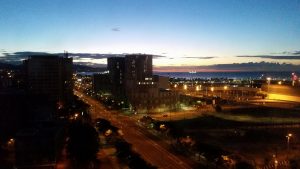 Main Collaborator: Dr. Travis Gallo (George Mason Univ) and Dr. Mason Fidino (Urban Wildlife Institute)
Main Collaborator: Dr. Travis Gallo (George Mason Univ) and Dr. Mason Fidino (Urban Wildlife Institute)
Objective: We are examining how the temporal activity of mammals (diurnal, nocturnal, cathemeral, crepuscular) changes in response to urbanization across major cities throughout the United States.
Improving Predictions of Animal Resource Selection
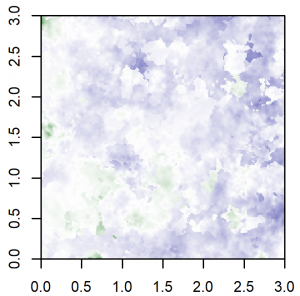 Main Collaborator: Dr. Joseph Northrup (Ontario Ministry of Natural Resources).
Main Collaborator: Dr. Joseph Northrup (Ontario Ministry of Natural Resources).
Objective: We are evaluating continuous data-driven regularization techniques to improve predictions when fitting resource selection functions in a use-availability framework using spatial relocation data from telemetry devices.
Madagascar Carnivore Ecology and Conservation
Main Collaborators: Dr. Zach Farris (App. State. Univ.)
Objective: To understand the unique ecology of Madagascar’s Eupleridae carnivores. This work is multi-dimensional covering aspects of behavioral, population, and community ecology, as well as biodiversity conservation.
Check out the Community Outreach Infographic created by Erin Wampole and Kim Rivera
Community occupancy of tropical mammals in Cat Tien National Park, Vietnam
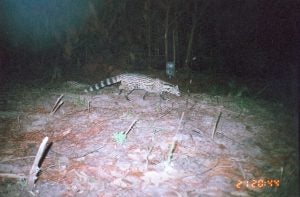 Main Collaborators: Save Vietnam’s Wildlife (SVW)
Main Collaborators: Save Vietnam’s Wildlife (SVW)
Objective: We aim to conduct a multi-species multi-season study of terrestrial and arboreal mammal occurrence in Cat Tien National Park, Vietnam. We will examine how species richness, community assemblage, and spatial/temporal behavior within the park changes in response to gradients of anthropogenic disturbances within the park’s core and buffer zones.
Avian electrocution and predictive power pole modeling
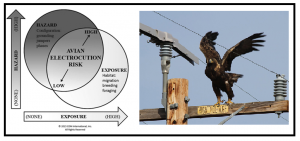
Main Collaborators: Dr. James Dwyer (EDM Internationa, Inc.)
Objective: To understand patterns of avian electrocution in order to develop mitigation strategies. Also, to develop predictive models based on machine learning algorithms to identify high risk electrocution areas throughout the Western United States.
Mule Deer Population Demography and Behavioral Plasticity
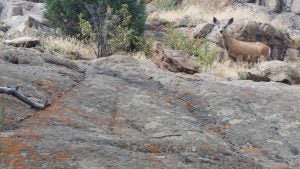
Main Collaborators:
Dr. Joseph Northrup (Ontario Ministry of Natural Resources and Forestry), Dr. Charles Anderson (Colorado Parks and Wildlife), Dr. George Wittemeyer (Colorado State University)
Objective: To understand the impacts of oil and natural gas development on the demography (abundance, survival, fecundity) and behavior (animal movement, resource selection) of Mule Deer. Specifically, within the Piceance Basin of Colorado during the winter.
Javan Rhino Population Monitoring
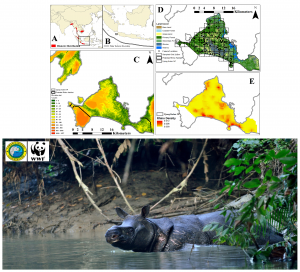
Main Collaborators: Dr. Sunarto (WWF-Indonesia), Arnaud Lyet (WWF-US), Rois Mahmud (WWF-Indonesia), and Dr. Barney Long (GWC)
Objective: To develop a robust population monitoring strategy for the last population of Javan rhinos to understand their population ecology and guide future conservation and translocation efforts.
Amur Tiger and Leopard Population Monitoring
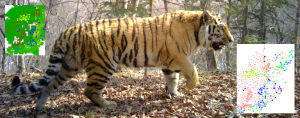
Main Collaborators: Dr. Dale Miquelle (WCS), Dina Matiukhina (LLNP), Anna Vitkalova (LLNP), and Alexander Rybin (WCS).
Objective: To understand the spatial and population ecology of Amur tigers and leopards along a transboundary region between China and Russia. To develop robust trans-boundary population estimates.
Bengal Tiger Population Monitoring and Intraspecific Interactions
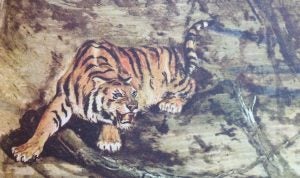
Main Collaborators: Dr. Pranav Chanchani (WWF).
Objective: To understand the spatial and population ecology of Bengal tigers in the Terai Arc. To also investigate social and intraspecific interactions that potentially limit tiger population abundance and growth.
Bayesian hierarchical radio-telemetry model development and Gunnison sage-grouse spatial ecology
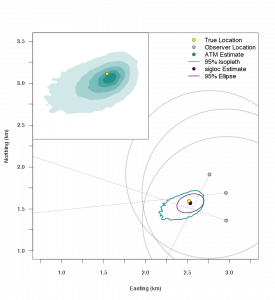
Main Collaborators: : Dr. Mevin Hooten (Colorado State University), Christopher Peck, Dr. Mindy Rice (USFWS), Dr. James Gammonley (CPW), Anthony Apa (CPW), and Dr. Amy Davis (USDA).
Objective: To develop modeling frameworks that integrate radio-telemetry uncertainty coherently into spatial ecological models and to investigate Gunnison sage-grouse space-use and site fidelity.
 Home
Home Browse
Browse Close
Close Events
Events Maps
Maps Email
Email Brightspace
Brightspace eCampus
eCampus


